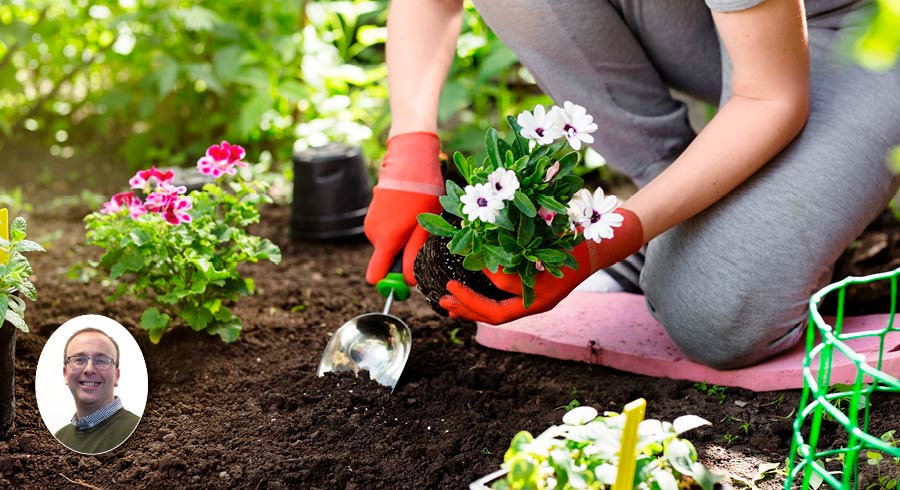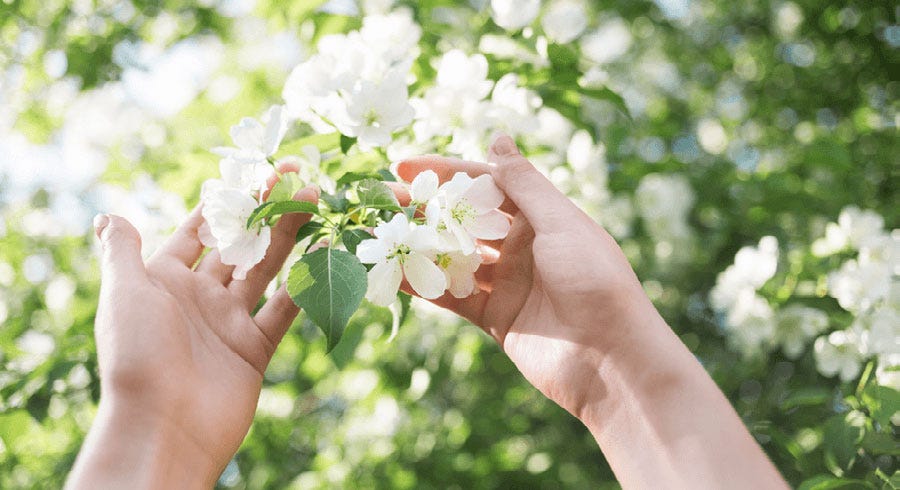April Gardening Guide


April is just around the corner so get your spring garden plants off to a great start with our April Gardening Guide. Whether you need tips for your lawn, flowers, trees, shrubs or kitchen garden – we’ve got it covered with the help of our inhouse garden guru, Richard Redman. Have a look below for our full list of gardening jobs for April and take your pick.
What to Do in the Garden in April – Key Jobs
Getting all of these gardening jobs done this month will ensure your spring plants and flowers thrive in the months ahead. April is the most important month to tend to your outdoor (or indoor) garden so there are lots of areas you need to consider - including how to tend specific bulbs, how to prune certain plants for the best displays in summer and more. It may sound like a lot, but we've carefully broken every job down so you don't have to worry.
Let’s start with one of the biggest areas: your lawn.


Prep Your Lawn
Get the ground ready for creating a new lawn from seed. First, rake the soil level and get rid of any stones. Then sow the lawn seed and rake it gently into the surface. Give it a good watering and cover with netting to protect from hungry birds.
If your lawn is already established, give it a new lease on life by removing thatch (a build-up of dead grass) by going over it with a lawn rake and then apply a spring lawn feed to aid growth. Neaten up messy edges with a half-moon tool and a piece of wood as a cutting guide. Try to leave a vertical edge, 7.5cm deep for optimal health.


Which Plants and Flowers Should you Prioritise in April?
Different plants and flowers need different care, so some are going to need more attention than others this month. If you're wondering what to prioritise this April, then read on for our gardening tips below.
Bulbs
It's a good idea to remove the heads of daffodils (known as ‘deadheading’) to preserve their energy for future blooms. The bulbs will then direct their energy into creating seeds. Leave the foliage till it goes brown.
Plant alstroemeria, lilies, eucomis, gladioli and other summer flowering bulbs now.


Beds and Borders
If there’s some empty space in your garden that you want to fill quickly, give hardy annuals a try. Cerinthe, scrambled eggplant, quaking grass, Californian poppy and love-in-a-mist can all be sown directly into well-prepared soil. Then in several weeks, this patch will be bursting with colour that’ll brighten your garden until autumn.
Make sure to look out for red lily beetles. While deceptively pretty, these pests will munch through flowers, leaves and buds of lilies and fritillaries. Know what to look for: fully grown red lily beetles are shiny scarlet, and their larvae are covered in a black, jelly-like substance. Check your plants often and squash any you come across so they don't get a grip.
Thin out herbaceous perennials that have grown into congested clumps. Use a fork to ease out from the earth and separate into multiple smaller bunches – if doing this by hand proves difficult due to the strong roots, a spade will help. Then replant and water well.
Last but not least, mulch beds and borders with compost, leafmould, composted bark or other materials to trap moisture in and stop weeds from shooting up.


Potted Plants
Help pansies, violas, daisies and other spring bedding plants last longer by removing fading blooms.
Give your plants protection from root-guzzling vine weevil grubs by soaking compost with a vine weevil killer.
Pinch out any growing tips of bedding plants using a thumb and finger to bring on fuller growth.


Trees and Shrubs
Check tree ties aren’t getting too tight. If they are, loosen them to stop them cutting into the bark as the stem grows bigger.
Give shrubs a helping hand by sprinkling a general fertiliser over the earth – chicken manure pellets are a great option.
Get rid of pure green branches from variegated shrubs, like elaeagnus, privet and euonymus – snip them all the way back to the main stem with some good quality pruners.
Damage from frost on vulnerable plants doesn’t look good, so use some secateurs on any areas that need pruning, cutting back to healthy growth. If you live in a particularly cold part of the UK or your garden is quite exposed, do this in May to give potential cold snaps time to pass.
Encourage azaleas and rhododendrons to look their best by pinching off fading flower heads to reveal a new set of leaves.
Make sure you frequently water any trees and shrubs that have been planted recently to give them the best chance of thriving – especially during hot, dry spells.
Prevent forsythia shrubs from becoming overgrown and encourage great flowering next year, by pruning when the flowers begin to fade. Cut back about a third of old stems to slightly above ground level.
Help roses thrive by scattering a general-purpose or specialist rose fertiliser around them. Then mulch with well-rotted farmyard manure – apply a 5cm layer over the soil, making sure to avoid any gaps between the manure and rose stems.


In the Kitchen Garden
Sow chilli peppers indoors in 7.5cm pots filled with seed compost under a cover. Beetroot, cabbage, carrots, cauliflowers and sprouting broccoli can be sown outside. Dig over the earth before sowing, making sure all weeds and large stones are removed and that the soil has a fine finish, resembling breadcrumbs.
Get rid of black fly and other sap-sucking bugs tucking into your veg with a pest control spray.
Plant well-rooted strawberry runners in growing bags, pots or in a sunny area outdoors. You may need to have some fleece on hand to protect the flowers at night if frosts are coming up.
Protect newly planted carrots from carrot root fly by surrounding crops with a 42cm high fine mesh barrier or by covering with fleece.
By completing all of these gardening jobs in April, your spring plants and flowers will be well prepared for the spring and summer. So put in the work in now and then sit back and enjoy the fruits of your labour! Remember, you can always browse our garden range if you’re missing any equipment or fancy adding some new live plants.










